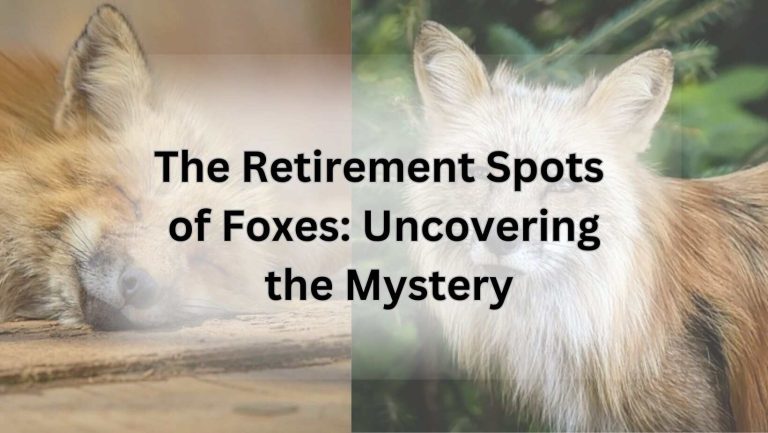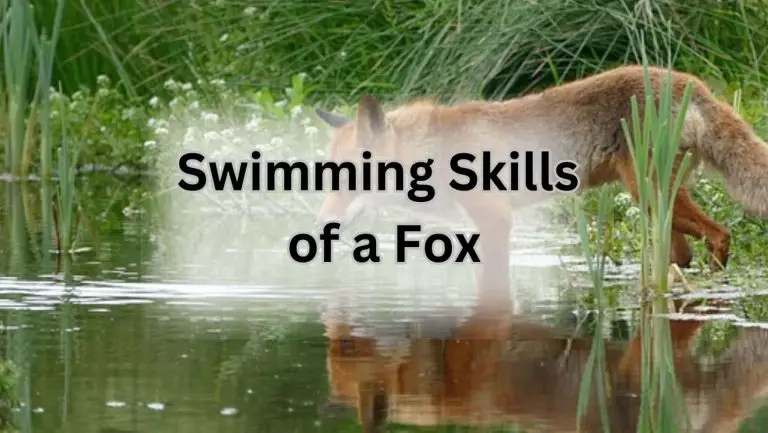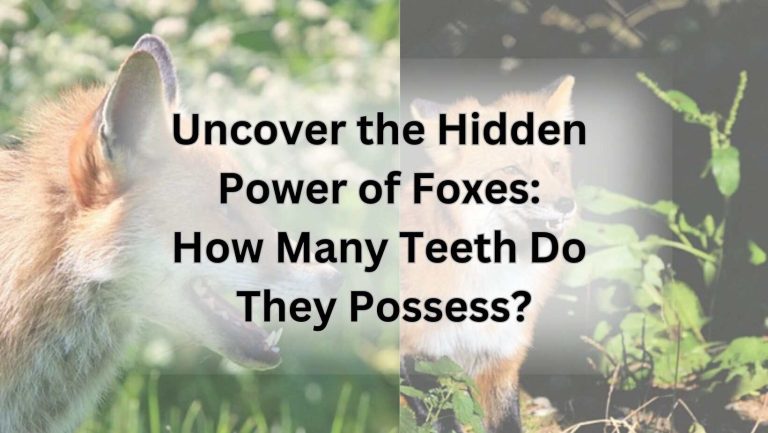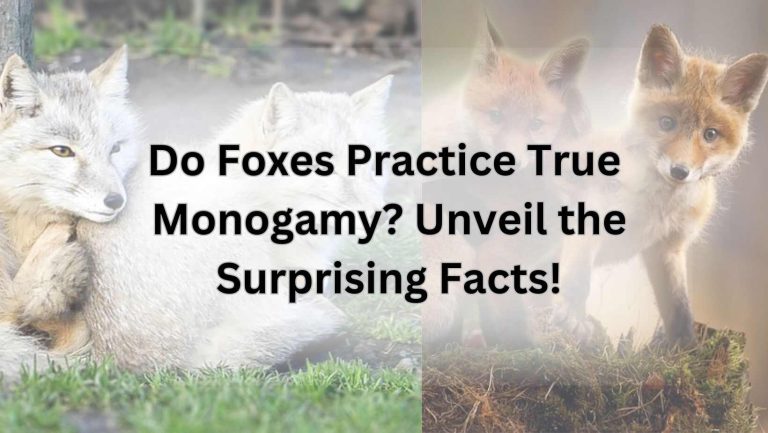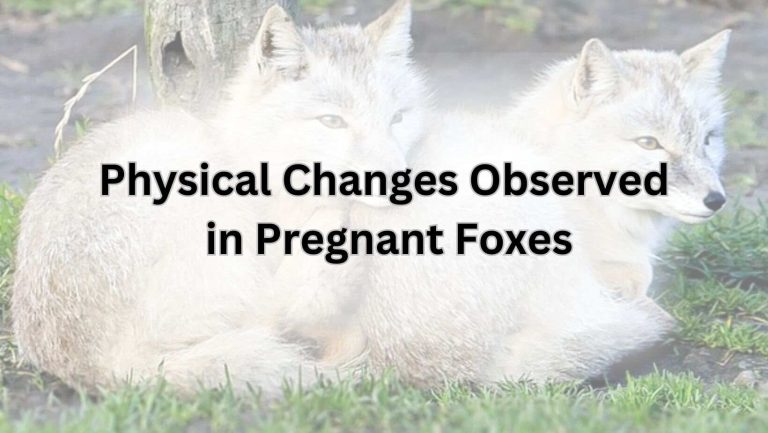Do Arctic Foxes Really Eat Polar Bears? Uncover the Truth!
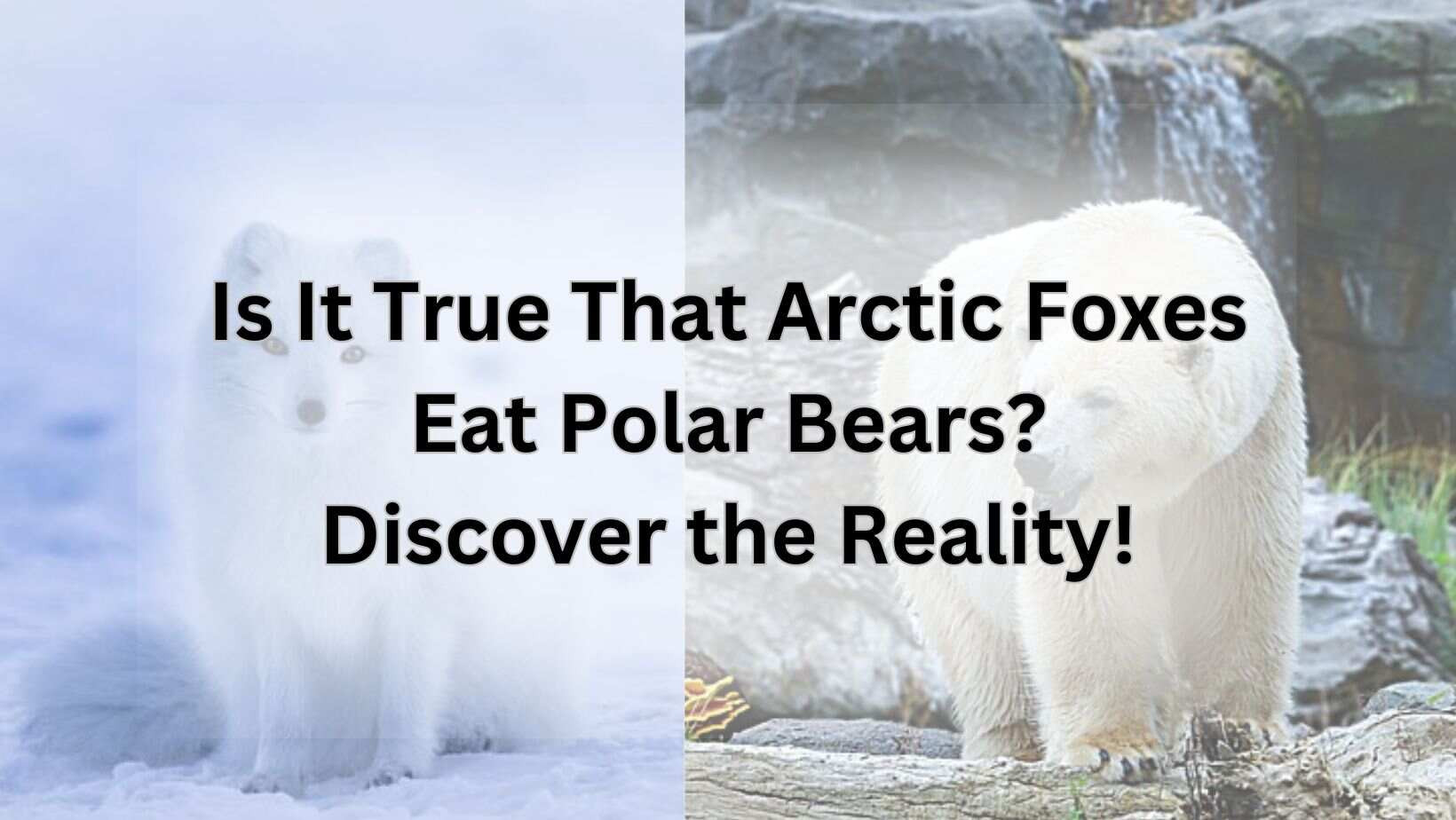
Can Arctic Foxes Eat Polar Bears
Arctic foxes are known for their adaptability and resourcefulness in the harsh Arctic environment. However, when it comes to their diet, polar bears are not on the menu. These cunning foxes have a carnivorous diet that mainly consists of small mammals, birds, fish, and carrion.
Arctic Fox Diet
What’s on the menu for these clever creatures? Arctic foxes primarily feast on lemmings, voles, and other small rodents that are abundant in the Arctic tundra. They are also known to scavenge for leftovers from larger predators like polar bears or wolves. Additionally, these foxes are skilled hunters and will opportunistically catch birds, fish, and even insects to supplement their diet.
Polar Bear Predators
Do polar bears have to worry about becoming a meal for arctic foxes? Luckily for these massive predators, arctic foxes are not a threat to them. Polar bears are at the top of the Arctic food chain, with their main diet consisting of seals. These bears will hunt seals by patiently waiting for them to surface through breathing holes in the ice or ambushing them near seal dens.
Interactions in the Arctic Ecosystem
How do arctic foxes and polar bears interact in the wild? While they may not be predators or prey to each other, these two species do share the same Arctic ecosystem. Arctic foxes may scavenge on polar bear kills or follow them to feed on scraps, showcasing the interconnectedness of the Arctic food web. Both species play crucial roles in maintaining the delicate balance of the Arctic ecosystem.
So, while arctic foxes may not have polar bears on their menu, they still play a vital role in the Arctic ecosystem. These clever creatures have adapted to thrive in one of the harshest environments on Earth, showcasing the resilience and ingenuity of nature.
Understanding Arctic Foxes
Arctic Fox Behavior
Have you ever wondered how these fluffy creatures survive in the harsh Arctic environment? Well, let me tell you, Arctic foxes are true survivors! They are known for their incredible ability to adapt to extreme cold temperatures, thanks to their thick fur coats that change color with the seasons. But did you know that Arctic foxes are also highly intelligent and resourceful hunters? These cunning canids have been observed using their keen sense of smell to locate prey buried under thick layers of snow. Talk about impressive hunting skills!
Arctic Fox Adaptations
Speaking of adaptations, Arctic foxes have some pretty nifty tricks up their sleeves. From their furry paws that act like snowshoes, allowing them to walk on top of snow effortlessly, to their compact bodies that help conserve heat in the frigid Arctic climate, these creatures are well-equipped to thrive in their icy habitat. But perhaps the most fascinating adaptation of all is their ability to survive on a carnivorous diet that includes small mammals, birds, and even fish. It’s no wonder these little predators are at the top of the Arctic food chain!
Arctic Fox Prey Preferences
Now, let’s talk about everyone’s favorite topic – food! Arctic foxes have quite the varied diet, feasting on anything from lemmings and voles to seabirds and their eggs. These opportunistic eaters will even scavenge on carrion if the opportunity arises. But what about polar bears? Contrary to popular belief, Arctic foxes do not typically hunt polar bears for food. In fact, polar bears are much larger and more powerful predators than Arctic foxes, making them unlikely prey. Instead, Arctic foxes focus on smaller prey that is easier to catch and consume.
So, the next time you find yourself marveling at the resilience and resourcefulness of Arctic foxes in the frozen tundra, remember that these cunning canids have adapted to thrive in one of the harshest environments on Earth. Their ability to survive and thrive in the Arctic is a testament to their incredible adaptability and ingenuity. And who knows, maybe one day you’ll have the chance to witness these remarkable creatures in action, hunting for their next meal in the snowy wilderness.
Polar Bear Feeding Habits
Polar Bear Diet
Ever wondered what these majestic creatures feast on in the icy Arctic wilderness? Well, polar bears have a diet fit for the ultimate carnivore. These fluffy giants primarily dine on seals, particularly ringed and bearded seals. With their incredible hunting skills, polar bears can detect seals swimming beneath the ice and patiently wait for the perfect moment to strike.
Hunting Techniques
How do polar bears manage to catch their slippery seal prey? These masterful hunters use various techniques, from patiently waiting by seal breathing holes to stealthily approaching them on ice floes. Polar bears rely on their keen sense of smell to detect seals from miles away, showcasing their impressive hunting prowess in the unforgiving Arctic environment.
Impact of Climate Change on Polar Bear Food Sources
As the Arctic climate changes at an alarming rate, the hunting habits of polar bears are also affected. With diminishing sea ice and altered seal populations, polar bears face challenges in finding their primary food source. Climate change poses a significant threat to the delicate balance of the Arctic ecosystem, impacting not only polar bears but also the entire food chain.
In the harsh Arctic landscape, polar bears are the undisputed kings of the ice, relying on their carnivorous diet to survive in one of the most extreme environments on Earth. Their hunting techniques are a testament to their adaptability and resilience, showcasing the intricate predator-prey relationship that defines the polar ecosystem. As we witness the effects of climate change on their food sources, it’s crucial to understand and appreciate the vital role polar bears play in maintaining the delicate balance of the Arctic food chain.
Arctic Fox vs. Polar Bear
Size and Strength Comparison
Ever wondered how an Arctic fox, a small and nimble creature, fares against the mighty and massive polar bear? Well, let’s dive into the epic showdown of size and strength in the icy wilderness of the Arctic!
Hunting Strategies
Do Arctic foxes outsmart polar bears in the art of hunting, or do the bears’ sheer size give them the upper hand? Let’s unravel the intriguing hunting strategies of these two fascinating predators in the frozen tundra.
Competition for Food in the Arctic
In the harsh Arctic environment, where resources are scarce, do Arctic foxes and polar bears engage in a fierce competition for food? Let’s explore the dynamics of their food chain and the challenges they face in securing their next meal.
Arctic foxes and polar bears may roam the same icy terrain, but their size and hunting strategies couldn’t be more different. While the polar bear reigns as the largest land carnivore, the Arctic fox relies on its cunning and agility to survive in the unforgiving landscape.
Size and Strength Comparison
Do you think the Arctic fox stands a chance against the colossal polar bear in a battle of size and strength? While the polar bear may tower over its smaller counterpart, don’t underestimate the agility and quick-witted nature of the Arctic fox. Size isn’t everything in the wild!
Hunting Strategies
How do these Arctic predators approach the hunt? The polar bear’s brute force and powerful jaws versus the Arctic fox’s stealthy and strategic hunting tactics – it’s a clash of brawn and brains in the frozen wilderness. Who will come out on top?
Competition for Food in the Arctic
When it comes to food, do Arctic foxes and polar bears find themselves locked in a fierce competition for resources? With limited prey available in the Arctic, these predators must navigate the delicate balance of the food chain to ensure their survival. It’s a high-stakes game of hunger in the icy realm.
As we delve into the world of Arctic predators, the contrasting nature of the Arctic fox and polar bear becomes clear. While one relies on sheer size and strength, the other thrives on agility and intelligence. In this frozen battleground, survival of the fittest takes on a whole new meaning!
Arctic Fox Predation on Polar Bears
Rare Instances of Arctic Foxes Preying on Polar Bears
Ever wondered if those cute, fluffy arctic foxes could take down a massive polar bear? Well, in rare instances, they have been known to do just that. While it’s not a common occurrence, arctic foxes have been observed scavenging on polar bear kills or even attempting to prey on young or weakened polar bears. These small but cunning creatures can surprise you with their predatory skills.
Factors Influencing Predation Behavior
What drives an arctic fox to go after a polar bear, you ask? Well, it all comes down to survival and opportunistic behavior. In the harsh arctic environment where food can be scarce, arctic foxes will seize any chance to secure a meal, even if it means taking on a formidable predator like the polar bear. Their adaptability and resourcefulness play a crucial role in their predation behavior.
Ecological Significance of Such Interactions
The interactions between arctic foxes and polar bears offer a fascinating insight into the intricate web of the arctic ecosystem. While polar bears are apex predators, the occasional predation by arctic foxes reminds us that nature is full of surprises and complexities. These interactions highlight the dynamic and interconnected nature of the arctic food chain, where each species plays a unique role in maintaining the delicate balance of the ecosystem.
So, next time you find yourself pondering the unlikely scenario of an arctic fox taking on a polar bear, remember that nature always has a way of keeping us on our toes. The wild is full of surprises, and the arctic fox’s occasional boldness in the face of a giant like the polar bear is just one of the many wonders of the natural world. Stay curious, stay amazed, and never underestimate the cunning of a tiny arctic fox!
Arctic Fox and Polar Bear Relationship
Mutual Interactions in the Arctic
Ever wondered how these two iconic Arctic animals, the cunning arctic fox, and the mighty polar bear, coexist in such a harsh environment? Well, let’s dive into their fascinating relationship!
Role of Predation in Ecosystem Balance
Are you curious about how predation plays a crucial role in maintaining the delicate balance of the Arctic ecosystem? Let’s explore how the arctic fox and polar bear fit into this intricate web of life.
Coexistence in a Harsh Environment
How do these two predators manage to share the same territory and resources in the unforgiving Arctic landscape? Let’s uncover the secrets of their coexistence in this extreme environment.
Arctic foxes and polar bears may seem like an odd pair, but they actually have a complex relationship that goes beyond just being predator and prey. The arctic fox, with its swift agility and cunning nature, plays a vital role in the Arctic food chain, preying on small mammals and scavenging for food. On the other hand, the polar bear, with its massive size and strength, primarily hunts seals for sustenance.
Despite their different hunting habits, these two predators can sometimes cross paths in the Arctic tundra. While polar bears are not known to actively hunt arctic foxes as a primary food source, they may opportunistically prey on them if the chance arises. However, the relationship between these two animals is not solely based on competition and predation.
Arctic foxes have been observed following polar bears to scavenge on the remains of their kills, forming a unique symbiotic relationship. In return, the arctic foxes help clean up the scraps left behind by the polar bears, contributing to the overall ecosystem balance.
Despite their occasional interactions, arctic foxes and polar bears have evolved to coexist in the Arctic environment, each playing a crucial role in the intricate web of life. Their relationship highlights the interconnectedness of species in a harsh and unforgiving habitat, where survival depends on adaptability and cooperation.
Threats to Arctic Fox and Polar Bear Populations
Are Arctic Foxes and Polar Bears in Danger?
The Arctic ecosystem is facing numerous challenges that are putting the populations of both Arctic foxes and polar bears at risk. Climate change is one of the biggest threats, leading to the loss of sea ice and a decline in prey availability for these predators. Additionally, human activities such as pollution, hunting, and habitat destruction are further exacerbating the situation.
How do These Threats Impact the Wildlife?
Arctic foxes rely on polar bears for scavenging opportunities, as they often feed on the remains of polar bear kills. With polar bear populations decreasing due to a shrinking habitat and reduced food sources, Arctic foxes are also suffering as a result. This interdependence highlights the delicate balance of the Arctic ecosystem and the impact that changes in one species can have on others.
Conservation Measures in Place
What is Being Done to Protect Arctic Wildlife?
Conservation efforts are crucial in safeguarding the future of Arctic foxes and polar bears. Organizations are working to raise awareness about the importance of preserving these species and their habitats. Measures such as protected areas, sustainable hunting practices, and research initiatives are being implemented to ensure the survival of these iconic Arctic predators.
How Can Individuals Contribute to Conservation?
As individuals, we can also play a role in protecting Arctic wildlife. Supporting conservation organizations, reducing our carbon footprint, and advocating for policies that prioritize environmental protection are all ways to make a positive impact. By working together, we can help ensure a future where Arctic foxes and polar bears continue to roam the icy landscapes of the North.
Importance of Protecting Arctic Wildlife
Why Should We Care About Arctic Predators?
Arctic foxes and polar bears are not just charismatic symbols of the North; they play a vital role in maintaining the balance of the Arctic ecosystem. As top predators, they help regulate the populations of their prey species and contribute to the overall health of the environment. Protecting these predators is essential for preserving the biodiversity and resilience of the Arctic region.
What Can We Learn from Arctic Wildlife?
Observing the behavior and adaptations of Arctic predators can teach us valuable lessons about survival in extreme environments. From their efficient hunting strategies to their ability to thrive in harsh conditions, Arctic foxes and polar bears offer insights that can inspire us to adapt and overcome challenges in our own lives. By appreciating and protecting these incredible creatures, we can learn to coexist harmoniously with nature.
Climate Change Effects on Arctic Predators
Impact on Arctic Fox and Polar Bear Habitats
Have you ever wondered how climate change is affecting the habitats of Arctic predators like the Arctic fox and the polar bear? These majestic creatures rely on the icy landscapes of the Arctic for their survival. However, with rising temperatures causing the ice to melt at an alarming rate, their habitats are shrinking. This loss of habitat not only affects their ability to find shelter but also disrupts their hunting grounds.
Changes in Food Availability
What happens when the food sources of Arctic predators start disappearing due to climate change? The Arctic food chain is intricately connected, with each species depending on the other for survival. Arctic foxes, for example, rely on small mammals like lemmings for their main food source. However, as the warming climate alters the distribution of these prey species, Arctic foxes are left struggling to find enough food to sustain themselves.
Adapting to a Warming Arctic
How are Arctic predators like the Arctic fox and the polar bear adapting to the changing climate in the Arctic? These resilient creatures have shown remarkable flexibility in the face of adversity. Arctic foxes, for instance, have been observed changing their hunting strategies and expanding their diets to include a wider range of prey. Polar bears, on the other hand, are being forced to travel longer distances in search of food as their sea ice habitats disappear.
In conclusion, the effects of climate change on Arctic predators are profound and far-reaching. As their habitats shrink and food sources dwindle, these majestic creatures are facing unprecedented challenges. However, by adapting to their changing environment and finding new ways to survive, Arctic predators like the Arctic fox and the polar bear are proving that they are true survivors in the face of adversity.
Research and Studies on Arctic Foxes and Polar Bears
Have you ever wondered about the fascinating interactions between arctic foxes and polar bears in the icy wilderness of the Arctic? Let’s dive into some intriguing research and studies that shed light on these incredible predators.
Scientific Findings on Arctic Predator Behavior
Arctic foxes are known for their cunning hunting skills and ability to survive in harsh environments. These resourceful creatures primarily feed on small mammals, birds, fish, and carrion. On the other hand, polar bears, the largest land predators on Earth, rely heavily on a diet of seals. But do polar bears ever consider arctic foxes as a potential meal?
Field Studies on Arctic Fox and Polar Bear Interactions
Field researchers have observed instances where polar bears have attempted to prey on arctic foxes, especially during times of food scarcity. However, due to the agile nature of the foxes and their ability to burrow in the snow, these encounters are not always successful for the polar bears. It’s a constant battle of wits and survival in the unforgiving Arctic landscape.
Contributions to Wildlife Conservation Efforts
Understanding the predator-prey relationship between arctic foxes and polar bears is crucial for conservation efforts in the region. By studying their hunting habits, food sources, and interactions, researchers can develop strategies to protect these iconic species and maintain the delicate balance of the Arctic ecosystem. Every piece of information gathered from these studies plays a vital role in ensuring the survival of these magnificent creatures.
Conclusion
After exploring the intricate relationship between arctic foxes and polar bears, it is evident that these two iconic creatures play vital roles in the delicate balance of the Arctic ecosystem. While arctic foxes primarily feed on small mammals, birds, and fish, polar bears are known for their carnivorous diet that includes seals and other marine life.
Understanding the predator-prey dynamics between these animals is crucial for preserving the unique biodiversity of the Arctic region. As a Canid Wild Life Lover with 20 years of experience, I have witnessed firsthand the complex interactions between arctic foxes and polar bears, highlighting the importance of coexistence and conservation efforts.
By appreciating the role each species plays in the arctic food chain, we can better protect their habitats and ensure the survival of these magnificent creatures for future generations. The future outlook for arctic wildlife coexistence depends on our ability to preserve their natural habitats and mitigate the impacts of climate change on their populations.

